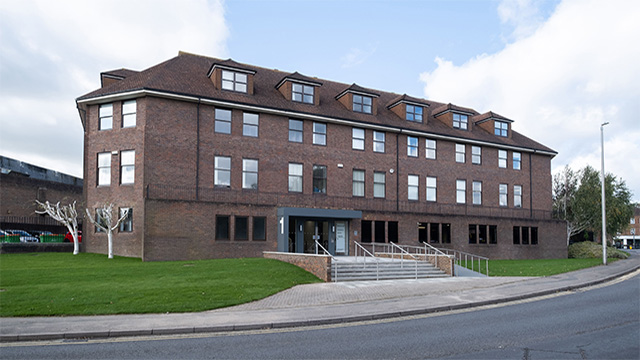Net zero doesn’t work without high-quality connectivity
COMMENT The UK has been at the forefront of the world’s journey to net zero, being one of the first countries to pledge to reach the milestone by 2050. As industry professionals, we are all aware of the statistics for the built environment, and how these emissions hinder our sustainability goals in the UK.
It is testament to progress that businesses have embraced ESG and the environmental benefits of net zero, yet, despite this, there is much further to go.
Meeting ESG goals will be underpinned by connectivity. Without high-quality broadband and 5G, there will be a slowing of the UK’s move towards net zero targets. Central to achieving the targets will be environmental monitoring to evidence building performance and adapt to future needs. In turn, this will have huge connectivity and capacity implications that will require high-grade digital infrastructure.
COMMENT The UK has been at the forefront of the world’s journey to net zero, being one of the first countries to pledge to reach the milestone by 2050. As industry professionals, we are all aware of the statistics for the built environment, and how these emissions hinder our sustainability goals in the UK.
It is testament to progress that businesses have embraced ESG and the environmental benefits of net zero, yet, despite this, there is much further to go.
Meeting ESG goals will be underpinned by connectivity. Without high-quality broadband and 5G, there will be a slowing of the UK’s move towards net zero targets. Central to achieving the targets will be environmental monitoring to evidence building performance and adapt to future needs. In turn, this will have huge connectivity and capacity implications that will require high-grade digital infrastructure.
A vital utility
High-quality connectivity is no longer just a nice-to-have service: it is a vital utility as important as energy or water supply, and should be regarded as such. While 48% of UK homes now have access to full fibre coverage, occupiers and residents will only continue to expect quick access to high levels of connectivity in a building, or the ability to install their own connections quickly and smoothly. At present, it can sometimes be relegated to an afterthought, causing delays and problems further down the line. This is especially true for businesses, with only 56% of medium-sized companies, with 50-250 employees, having access to gigabit broadband capability.
If connectivity is not brought to the top of the agenda, it will be challenging for commercial property landlords and investors to meet key environmental commitments and regulatory requirements. Environmental regulation around commercial property is tightening, most notably in the UK, with the Minimum Energy Efficiency Standard Regulations.
Investment mandate
While the government has pushed digital connectivity up the agenda, there needs to be a mandate for investment in connectivity in the widest sense. Here are our proposals to drive this:
Roll-out of digital champions: The appointment of local digital champions who can help people and businesses understand the benefits of better connectivity, create plans that ensure high-quality connections and bring operators together to deliver it.
Linking connectivity to the net zero challenge: A greater understanding on how fast connections can support MEES ahead of changes to minimum requirements.
Bottom-line benefits for businesses: Driving widespread education about the private and public benefits of fast connection, from financial and environmental to job creation. Recent data from Moody’s shows that lease lengths for US office buildings were on average nine months longer for well-connected buildings confirmed by a WiredScore certification. WiredScore also revealed that data from 2019 showed that a certified building in London commanded 4.7% more in rent than those without the accreditation.
Prioritising sites for infrastructure: Ensuring planning consents and acquisitions for land or built assets that could be locations for electronic communication sites are fast-tracked and dealt with collaboratively. As recognised in the government’s Wireless Infrastructure Strategy, “Operators’ inability to secure suitable sites is one of the biggest barriers to network deployment.”
Future-proofing the tech
The conversation around connectivity remains too siloed. When we talk about making buildings that are fit for the future, we are often talking about energy. However, increasingly the conversation we are having with both residential and commercial developers, landlords and owners is around how to prevent obsolescence in a building’s tech infrastructure, to prevent them from having to regularly retrofit or upgrade, for greater long-term resilience and commercial success.
Businesses of all types need to consider future-proofing their connections, whether that is in one building or across a portfolio of real estate assets. In a practical sense, this will mean liaising with one or more broadband operators at each site and negotiating wayleaves, the legal agreements that allow operators to access buildings to install or maintain their hardware. It will also mean non-digital experts with responsibility for property assets starting to ask questions about future-proofing strategies.
With further regulations coming down the tracks, the time for digital upgrade is now.
Darren Zitren is head of infrastructure at Cluttons
Photo courtesy of Cluttons











